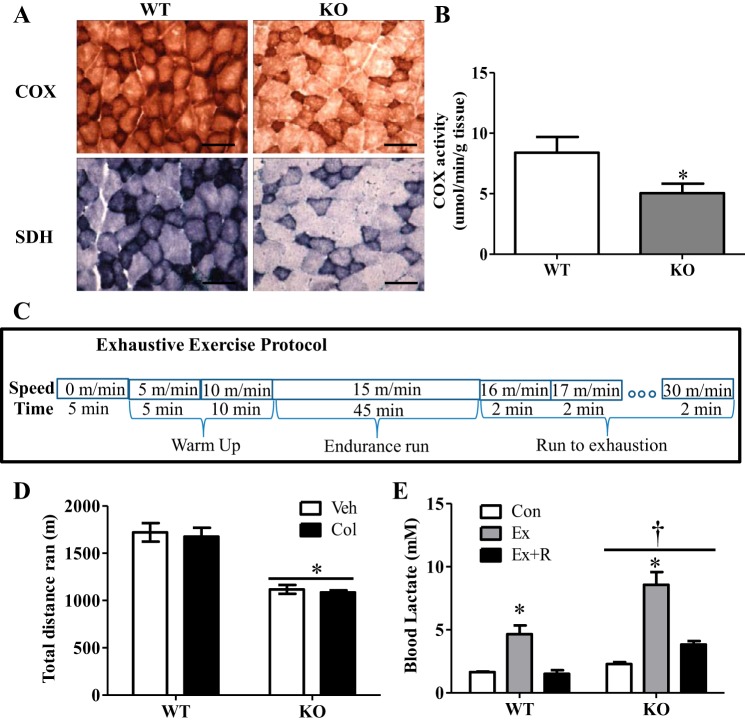Fig. 1.
Lack of peroxisome proliferator-activated receptor-γ coactivator-1α (PGC-1α) results in diminished mitochondrial content and reduced exercise performance. A: representative images of cytochrome oxidase (COX) and succinate dehydrogenase (SDH) staining of extensor digitorum longus muscle from control [wild-type (WT)] and PGC-1α knockout (KO) animals. Scale bars = 100 μm. B: COX activity as a surrogate measure of mitochondrial content in WT and KO animals. C: after 2 days of habituation to the treadmill, animals were run to failure utilizing an incremental exercise protocol on a 0% incline. Animals began with a warm-up period of 5 min at 5 m/min and 10 min at 10 m/min followed by 45 min of endurance running at 15 m/min. Finally, running speed was increased by 1 m/min every 2 min until the animals refused to continue. D: running performance (i.e., total distance run) in WT and KO animals injected with water [vehicle (Veh)] or 0.4 mg/kg colchicine (Col). E: blood lactate levels in WT and KO animals prior to exercise (Con), immediately following exercise (Ex), and following 90 min of recovery (Ex + R). Values are means ± SE; n = 4–12 for all groups. *P < 0.05, significant effect of exercise. †P < 0.05, significant effect of genotype.

